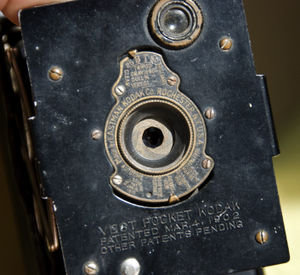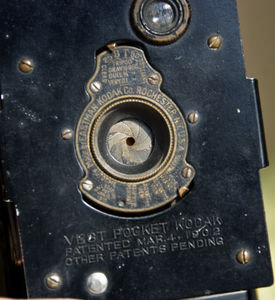An aperture is the hole or opening in a camera system where light is passed through. In the first pinhole cameras, this was simple the pinhole. In modern cameras the aperture is the lens itself.
Aperture refers to size of this opening, rather than the opening itself. In this context there is an aperture diameter, referring to the diameter of the physical aperture, and there is the f-number, which refers to the ratio of the lens' focal length to its aperture diameter (focal length / aperture diameter).
- The light around you will be collected through the lens
- The aperture will choose how much light to let into the camera
- The shutter will open and close allowing that light inside the camera
- The light will fall on the film/sensor where and image will be captured
Aperture for Dark Conditions

Aperture For Bright Conditions

Aperture diameter
For photographic purposes, the aperture diameter isn't of great importance, and by itself does not tell a photographer much.
F-number
Of more direct importance to photography is the f-number - the ratio of focal length to aperture diameter.
For exposure purposes, this f-number determines the amount of light per sensor area per unit time which passes through the aperture and falls onto the image sensor.
Some commonly found f-numbers are listed below:
f/1, f/1.4, f/2, f/2.8, f/4, f/5.6, f/8, f/11, f/16, f/22
Standard aperture is usually between f/8 and f/11. A saying used by photo journalists is “f/8 and be there.” This refers to the fact that f/8 allows you enough depth of field
 ශිල්ප 64
ශිල්ප 64